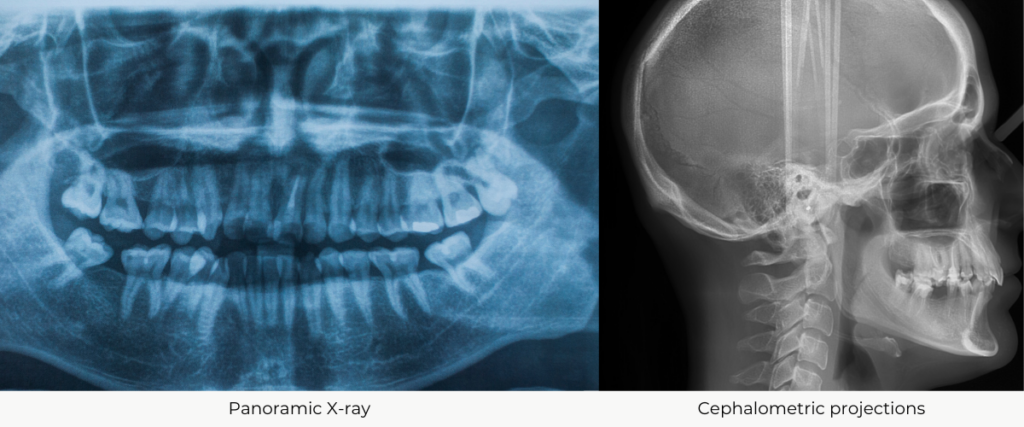Article reviewed by:
Dr Tan Kian Meng • Prosthodontist

You may have been asked to take a dental X-ray at your first dental visit. You may have wondered, ‘I just want my teeth cleaned — why do I need to get an X-ray?’
In this post, we explore the key reasons why a dental X-ray is essential during your routine dental check-up.
Also known as dental radiographs, American dental Association emphasises the importance of it in your dental care journey. Along with an oral examination, they provide your dentist/dental specialist with a comprehensive view of a patient’s oral health. dental X-rays offer insights into areas that aren’t visible during a standard clinical check-up.
dental-X-rays”>Benefits of dental X-rays
They facilitate accurate diagnosis. With the help of dental X-rays, dentists/dental specialists can accurately diagnose and treat any detected issues early, before the condition worsens. This saves patients from going through complex and costly procedures.
A dental X-ray enables dentists to see the unseen. They help examine what happens between the teeth, underneath the gums, roots, and supporting bone. This process reveals the extent of:
- caries (tooth decay)
- periodontal (gum) disease
- bone loss
- presence of cysts/tumors
- buried wisdom teeth/extra teeth
- infections that develop under your gums or within jaw bones etc.
According to dental-x-rays-in-diagnosis/”>EIN Presswire, dental X-rays are also crucial in assessing the positioning of teeth, especially in children and adolescents.dental-x-rays-in-diagnosis/”> As the jawbone develops, X-rays monitor the growth and alignment of permanent teeth.
This information enables dentists and orthodontists to detect potential issues like impacted teeth, congenitally missing teeth, crowding, or misalignment of teeth. Early intervention can reduce the length of orthodontic treatment and prevent further complications.
These dental issues cannot be seen with the naked eye, hence a dental X-ray is essential.
dental-X-rays”>Types of dental X-rays
Several types of dental X-rays record different perspectives of a patient’s mouth. At Specialist dental Group, we mainly use the following types:
 dental X-rays” class=”wp-image-20657″ srcset=”https://www.specialistdentalgroup.com/wp-content/uploads/2024/08/panoramic-x-ray-1-1024×427.png 1024w, https://www.specialistdentalgroup.com/wp-content/uploads/2024/08/panoramic-x-ray-1-300×125.png 300w, https://www.specialistdentalgroup.com/wp-content/uploads/2024/08/panoramic-x-ray-1-768×320.png 768w, https://www.specialistdentalgroup.com/wp-content/uploads/2024/08/panoramic-x-ray-1.png 1200w” sizes=”(max-width: 1024px) 100vw, 1024px”/>
dental X-rays” class=”wp-image-20657″ srcset=”https://www.specialistdentalgroup.com/wp-content/uploads/2024/08/panoramic-x-ray-1-1024×427.png 1024w, https://www.specialistdentalgroup.com/wp-content/uploads/2024/08/panoramic-x-ray-1-300×125.png 300w, https://www.specialistdentalgroup.com/wp-content/uploads/2024/08/panoramic-x-ray-1-768×320.png 768w, https://www.specialistdentalgroup.com/wp-content/uploads/2024/08/panoramic-x-ray-1.png 1200w” sizes=”(max-width: 1024px) 100vw, 1024px”/>- Panoramic – this X-ray captures the entire mouth in a single image, displaying all the teeth, roots, and jaw bones in both the upper and lower jaws.
- Periapical – this X-ray features one to two teeth, showing the entire length of each tooth from crown to root.
- Bitewing – this X-ray shows the upper and lower molars (back teeth) and bicuspids (teeth in front of the molars). They are called ‘bite-wings’ because you bite down on a wing-shaped device holding the film in place while the X-ray is taken. They help to locate decay between back teeth.
- Cephalometric projections – this X-ray shows the side view of the entire head, mostly used for orthodontic and jaw-related treatments.
- Cone beam computed tomography (CT) – this X-ray shows 3-dimensional (3D) images of dental structures, soft tissue, nerves, and bone for dental surgery-related cases like cysts and dental implants.
dental-X-rays”>Safety of dental X-rays
While dental X-rays do involve radiation, the amount of radiation used to obtain them is very minimal. Scientific journals have shared the mathematics for it, showing that it is very safe. In fact, digital X-rays expose you to less radiation than traditional film-based X-rays.
How often do I need to take one?
The need varies based on each patient’s dental condition. A dental X-ray is required during every patient’s first visit to Specialist dental Group. However, if you have taken one within the last six months, you can send it to us to avoid taking a new one.
If the patient maintains excellent oral hygiene and no dental issues arise during subsequent check-ups, there is no need for another dental X-ray for the next two years.
However, if dental issues like a toothache or swelling arise, a new dental x-ray will be necessary for examination.
dental-x-rays/”>Source link



